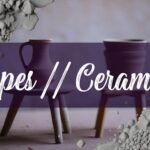Cordierite ceramic, a magnesium alumina silicate, stands out in the world of technical ceramics due to its unique combination of properties, making it invaluable across a multitude of applications. With the chemical formula (Mg,Fe)2Al3(AlSi5O18), cordierite is characterized by its exceptional thermal shock resistance, low thermal expansion, and excellent electrical insulation properties. These characteristics stem from its crystal structure and carefully controlled manufacturing processes, allowing it to withstand rapid temperature changes and maintain structural integrity in demanding environments. Beyond its technical applications, cordierite, in its natural stone form, presents in shades of gray, blue, bluish-violet, greenish, and yellowish-brown, often fashioned into jewelry, showcasing its versatile appeal.
Key Properties of Cordierite
Key to cordierite’s utility are its thermal properties. Its thermal expansion ranges from 2.9 to 4.8 µm/m-K, meaning it experiences very little dimensional change with temperature fluctuations. This is crucial in applications where components are subjected to high temperatures or rapid temperature cycling. The thermal conductivity of cordierite is between 1.3 and 1.7 W/m-K, which, while not exceptionally high, contributes to its thermal shock resistance. This resistance is further enhanced by deliberately aligning the cordierite crystals during manufacturing to leverage the minimal thermal expansion along one axis. Electrically, cordierite boasts a high resistivity of 10^10 x Ω-m, making it an effective electrical insulator. This, combined with its thermal properties, renders it suitable for applications in electrical heating elements, fuses, and thermostats. Mechanically, cordierite has a Young’s Modulus of 62 GPa and a tensile strength of 190 MPa, providing a good balance of stiffness and strength for various structural applications.
Applications of Cordierite Ceramic
Cordierite ceramic finds its niche in a diverse range of applications, primarily due to its thermal shock resistance and low thermal expansion. In the automotive industry, it is a vital component in catalytic converters, forming the honeycomb substrates that support the catalytic coating. Its ability to withstand the rapid temperature changes in exhaust systems makes it ideal for reducing harmful emissions and optimizing fuel efficiency. Cordierite is also extensively used in kiln furniture, including batts, shelves, and supports, essential for the ceramic sintering and glass manufacturing industries. These components can endure the high temperatures and rapid temperature cycles within kilns without cracking or warping, ensuring consistent and reliable performance. Furthermore, cordierite is utilized in manufacturing thermal equipment, electric devices, and insulation equipment, such as heating element holders, insulators, and components in fuses and thermostats. Its high insulation properties also make it suitable as a substrate material for certain electronic devices. Beyond industrial uses, cordierite’s thermal properties make it an excellent material for pizza stones, offering even heating and moisture absorption for a crisp crust. Its versatility extends to filtration, where it is used in the form of honeycombs or ceramic foam to purify molten metal and reduce impurities. If you’re interested in learning more about the equipment used to achieve such high temperatures, check out this article on troubleshooting your electric kiln. Additionally, for those curious about the artistic side, exploring pottery for gardening demonstrates another creative application.
Manufacturing Cordierite Ceramic
The manufacturing of cordierite ceramic components involves several key stages, starting with the selection and preparation of raw materials. Typically, these include natural materials like talc, clay components, feldspar, and sometimes synthetic aluminum oxide and silicon oxide. The particle size of these materials is crucial, as finer particles react better during the firing process. Therefore, the raw materials are ground and homogenized in water using grinders, often coated with a ceramic material like corundum to minimize contamination. The grinding process aims to reduce the average particle size to below 15 micrometers, ensuring efficient mixing and reactivity. After grinding, the mixture is shaped using various techniques, including extrusion, dry pressing, and slip casting, depending on the complexity of the desired shape. Extrusion is commonly used for producing continuous shapes, while pressing is suitable for more intricate designs. Once shaped, the ceramic components undergo a drying process to remove moisture, followed by sintering, a high-temperature heating process that transforms the raw material into a solid, crystalline matrix. Sintering typically occurs at temperatures between 1200°C and 1450°C. The cooling process must be carefully controlled to avoid thermal shock, gradually reducing the temperature to prevent cracking. Depending on the intended use, the final product may undergo additional processes such as grinding, cutting, or coating to achieve the desired dimensions and surface finish.
Advantages, Disadvantages, and Future Trends
Compared to other ceramic materials like alumina or zirconia, cordierite offers a unique set of advantages and disadvantages. Cordierite excels in thermal shock resistance and low thermal expansion, making it superior in applications involving rapid temperature changes. Its cost-effectiveness is also a significant advantage, making it a relatively cheaper option for many applications. However, cordierite is not as strong or hard as alumina or zirconia, limiting its use in high-stress or abrasive environments. The microstructure of cordierite plays a crucial role in its performance. Factors such as grain size, orientation, and the presence of secondary phases can significantly influence its thermal expansion, mechanical strength, and overall durability. For instance, aligning the cordierite grains can reduce the thermal expansion coefficient and improve thermal shock resistance. The addition of materials like zirconia (ZrO2) can enhance the sintered density and fracture toughness by promoting glass phase formation along grain boundaries and deflecting cracks at the interfaces. As research continues, future trends in cordierite ceramics may focus on further enhancing its mechanical properties through advanced processing techniques and microstructure design, expanding its applications in high-performance and specialized fields.





